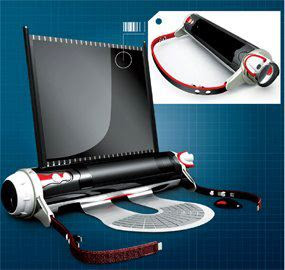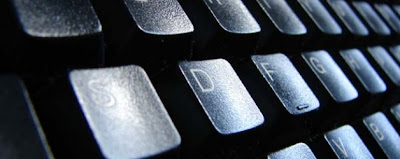TRULY AMAZING...!!
A Comp that can roll....!!!!
wow...!!

The D-roll Laptop is designed like an
artists tube, which contains a roll up
OLED screen and a cool slide out
keyboard, it also has a mouse and a
web camera which are used as the end
caps for the case.
D-Roll, which stands for “digital roll,” is
a concept from designer Hao Hua.
It
features one long cylindrical base from
which the screen unfurls in one
direction and the keyboard in another.
When rolled, you can use the attached straps to carry around the D-Roll in
classic purse fashion or put it in a
cylindrical case.
This could be pure science fiction but
the idea behind the D-Roll concept isn’t
too far from being possible.
Sony has already shown off rollable LED screens
which are expensive today but should
come down inprice once they start to
become more standard.
We also have SOC (System on a Chip)
computers, which are tiny computer boards that manage all the necessary
aspects of a computer (like processing,
graphics, internet and memory) on
silicon which enables smallercases and
odd sizes.
A Comp that can roll....!!!!
wow...!!

The D-roll Laptop is designed like an
artists tube, which contains a roll up
OLED screen and a cool slide out
keyboard, it also has a mouse and a
web camera which are used as the end
caps for the case.
D-Roll, which stands for “digital roll,” is
a concept from designer Hao Hua.
It
features one long cylindrical base from
which the screen unfurls in one
direction and the keyboard in another.
When rolled, you can use the attached straps to carry around the D-Roll in
classic purse fashion or put it in a
cylindrical case.
This could be pure science fiction but
the idea behind the D-Roll concept isn’t
too far from being possible.
Sony has already shown off rollable LED screens
which are expensive today but should
come down inprice once they start to
become more standard.
We also have SOC (System on a Chip)
computers, which are tiny computer boards that manage all the necessary
aspects of a computer (like processing,
graphics, internet and memory) on
silicon which enables smallercases and
odd sizes.







































